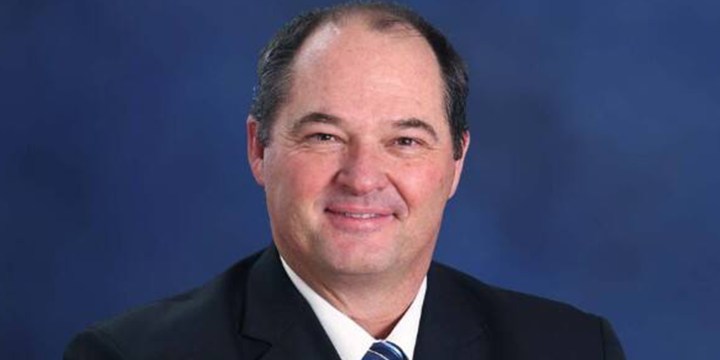BUSINESS MAVERICK
Ford SA throws its weight behind Ramaphosa

Neale Hill, the MD of Ford SA, believes that policy certainty in recent months has improved, which has put the automotive company at ease because it now sees ‘once in 30 years investment opportunities’ in South Africa.
President Cyril Ramaphosa’s management of SA’s economy over the past 20 months has been endorsed by automotive giant Ford on the eve of his conference that seeks to drum up investments worth billions of rand from big-ticket private sector players.
At a time when the private sector is increasingly becoming despondent at the slow pace of economic reforms and restructuring of debt-laden state-owned entities (SOEs) under Ramaphosa, Ford is taking a pragmatic approach towards SA, saying investment opportunities in the country are still attractive.
Since Ramaphosa came into office in February 2018 to complete Jacob Zuma’s second presidential term, economic growth has been downgraded, unemployment has soared to an 11-year high of 29.1% and SA’s debt-to-GDP ratio is expected to rise to more than 70% in the next three years due to ongoing bailouts for SOEs.
Without a credible plan to restructure the debt of SOEs such as Eskom and South African Airways, credit rating agencies Moody’s Investors Service and Fitch Ratings have decided to downgrade SA’s outlook from stable to negative.
However, Neale Hill, the MD of Ford SA, believes that policy certainty in recent months has improved, which has put the automotive company at ease because it now sees “once in 30 years investment opportunities” in South Africa.
“We are still attracted to South Africa. It has free-trade agreements with Europe, which allows us to have duty-free exports of locally manufactured vehicles. The performance of the rand against other countries allows us to grow exports,” Hill said in an interview.
He said the policy environment gives automotive companies “clarity of where we are going” after numerous calls by the industry for the government to create a framework for more locally-built vehicles.
Big changes in the auto industry
In November 2018, the Department of Trade and Industry (Dti) finalised the SA Automotive Masterplan, which sets out several objectives, including increasing the localisation rate from 35% to 60%, achieving 1% of global vehicle production in SA, and doubling employment in the automotive industry (from current levels of about 240,000) by 2035.
Ford has spent more than R11-billion on its SA operations since 2009, with most of the money going into its Silverton vehicle assembly plant in Tshwane, which builds single- and double-cab Ford Rangers, along with two variants, the Everest sports utility vehicle and the high-performance Raptor. The most recent investment was R3-billion in 2016 to support the local production of the Ford Everest SUV.
It has furthered its localisation drive. Ford, along with national, provincial and local government, launched the Tshwane Automotive Special Economic Zone (SEZ) in Pretoria on Tuesday 5 November.
SEZs are areas targeted by the government for investment activities, with the support of the private sector, to increase SA’s trade balance, investments, and job creation. Investors are attracted to SEZs because of the range of incentives they offer, including reduced corporate tax rates, tax incentives on employment and state-of-the-art infrastructure.
The Tshwane Automotive SEZ, which has been five years in the making, is an automotive component supplier industrial park that is located near Ford’s plant in Silverton, Tshwane. The government has shelled out R3.6-billion in the first of the three phases to launch the Tshwane Automotive SEZ, which is expected to create 6,700 direct jobs once it is fully operational by 2021.
Ford has not contributed money to establish the automotive SEZ. However, the company has partnered with the government to bring in nine of its automotive component suppliers to establish their manufacturing operations on the land where the SEZ is located. Hill said Ford is in talks with nine other suppliers to set up their operations at the SEZ, bringing the number of targeted suppliers to 18.
These suppliers will supply Ford with automotive components for its assembly plant in Silverton. The suppliers at Tshwane Automotive SEZ are also expected to supply vehicle components to other assembly plants operated by Nissan and BMW that are based nearby.
The SEZ came a day before Ramaphosa is set to open the second South Africa Investment Conference on Wednesday 6 November, in a bid to raise R1.2-trillion in new domestic and international investment over the next four years. SEZs are central pillars of Ramaphosa’s wide-ranging interventions to revive SA’s economy.
He said at the launch of Tshwane Automotive SEZ:
“We need to ensure that we can attract investors [to SA] because they can go anywhere in the world. They can come here [SA] or move on if they find that the offerings we put on the table are not conducive for their investments to take place.” BM














